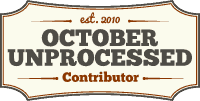
God forbid you should miss Part 1.
Meanwhile, back at the corporate ranch, some of my office mates and I were discussing the imminent arrival of the In-N-Out truck. I had always held this family-owned business in higher esteem than the big burger chains since the food was fresher and the employees were supposedly treated better. But now, thinking about Cowschwitz, I was on the fence.
“The grilled cheese is just as good as the burger because they grill the bun on the same grill as the meat,” said a co-worker.
“I like it better without the meat," someone else chimed in. "You don’t feel as bloated afterwards. And I’m not even a vegetarian.”
Sheesh. After the carnivorous hand of god had touched me, were those two going to turn me into an agnostic again? Oh sure, they sounded like the voice of reason, but Rabbi, doesn’t god know best? I had heard about people ordering In-N-Out burgers without the meat and always wanted to try one, but today? After fantasizing about my bovine bad boy all week? After recalling the times when I had been so sated by his ilk, I could have lit up a Marlboro? Giving up now would be like enduring a Brazilian wax for that night's booty call, only to end up turning in early and watching a little Golden Girls instead. But this booty call would be with a beefcake named Bo.
“The truck will be here any minute,” I announced. “What should I do?”
“Get the burger,” a guy said with testosterone in his voice.
“Get the grilled cheese,” a gentler soul advised.
I decided to stick with my original plan. I would get the burger.
It was 11:55 AM when a couple of friends and I headed outside to line up for the truck before everyone else got wind of its arrival. There were about a dozen people in front of us, and I could smell that grilled meat wafting in the soft, gray drizzle. It wasn’t how I remembered it smelling. Now it had a gamey aroma, like, well, Cowschwitz. Ironically, I had been to the real Auschwitz on a gray, drizzly day, but there was no cow waft. Now, the closer we moved up in line, the stronger the Cowschwitz smell got. “Maybe I should get the grilled cheese,” I thought. But 30 seconds later I heard myself say, “I’ll have a cheeseburger with everything on it.” Pfew. I had made a decision. It was a done deal. But you know what, Rabbi? I didn’t feel a lot of conviction when I said it.
“Can I change my order to grilled cheese?” I blurted out as the order taker had already moved on to the next people in line.
“No problem,” he said.
Feeling both relieved and disappointed, I was an emotional oxymoron. While thinking I might finally be ready to commit to the meatless faith, I also lamented my loss as the burgers passed me by.
After my number was called, I carried the grilled cheese and bag of potato chips (they weren't making fries) to my desk in that wasteful cardboard box they serve it in. I took the first bite and tasted the crunchy bun slathered with the special sauce. Yep, that was how I remembered it. So far, so good. Then the Velveeta-like melted cheese announced its arrival. After a few more bites, it became clear that two overcompensating slices of processed American cheese did not a burger or a grilled cheese make. Sure, it still had that In-N-Out flavor, but did I really like the ingredients? Had I lost my taste for this stuff, even as a rare treat? An infrequent bag of potato chips was usually nirvana to me. But now thinking about the GMOs and the pesticides and the environment and big ag decimating the small farmers, well, it was too much. I could taste all the implications. Rabbi, you know what they say? Guilt is a terrible thing to waste. But I don't have to tell you.
Related Links:





























































